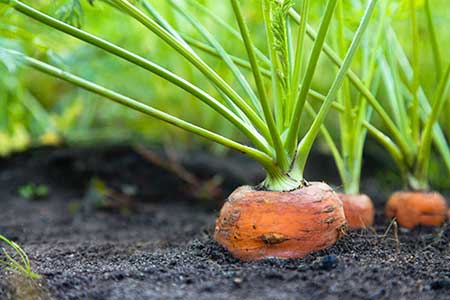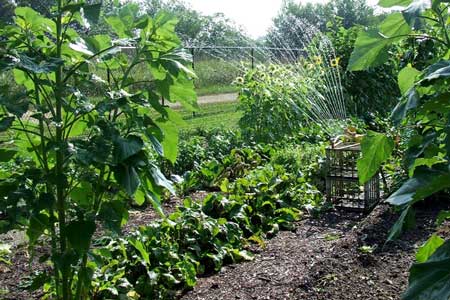Vegetables
How to grow
There is nothing quite like the taste of fresh vegetables straight from the garden. Add to this the satisfaction and sense of achievement, the savings, the knowledge that your vegetables are free of pesticides and you have some very powerful reasons for growing your own vegetables.
At a Glance
- Prefer a warm, sunny site
- Ensure the site has free draining soil and add compost to the soil
- Use quality seeds or plants
Selecting the Site
- Vegetables will grow best in a warm sunny position. They will not grow and yield in shade or where they have to compete for light and moisture.
- Shelter from strong winds is also a benefit.
- The size of the vegetable garden depends on the size of your family and the vegetables required.
Soil
Vegetables require a free-draining soil, rich in organic matter (compost).
In clay soils the vegetable plot should be raised or built up some 15cm above the surrounding soil to ensure good drainage.
Seed
Modern hybrid varieties of vegetables are higher yielding, better tasting, more disease resistant and more uniform than old varieties. Seek advice from your Nichols Garden Adviser on the best varieties for your area and season.
The Plants
In many cases it is more convenient to buy plants than to raise seeds. It saves time, and often only a small number of plants are required. The same principle applies as for seed - buy quality. Good seedlings should have 6-8 true leaves and be 5-8 cm high. Hybrids will cost a little more but are worth it!

The Seasons
Most vegetables prove disappointing if grown out of season.
- Cool season vegetables grow best at temperatures of 10 to 20°C, but can tolerate colder. This group includes broad beans, broccoli, brussel sprouts, cauliflower, onions, peas, spinach and turnips. These vegetables are best planted February to September for harvesting May to December.
- Warm season vegetables grow best at temperatures above 20°C. They grow poorly in cold weather and are susceptible to frost. This group includes beans, capsicum, eggplant, potato, sweetcorn, sweet potato, tomato and all the curcubit vine crops. They are planted October to February for harvesting December to May.
- Intermediate season vegetables are the third group that grow best at temperatures of 15 to 25°C. This group includes beetroot, cabbage, carrot, celery, leek, lettuce, parsnip, radish and silver beet. Many of these can be grown in cool or warm conditions, but the correct variety for the season must be chosen or they will bolt to seed.
Planning a Succession
Beginners often make the mistake of planting up a whole vege garden in October. All the crops are then ready for harvesting at the same time in early January, just as the family goes away on holiday!
For a steady continuous supply of vegetables it is best to plan requirements and sow little and often. At the same time make use of the season changes and rotate crops.
A plot system rather than rows often makes this easier to manage.

Watering
During dry weather it is important to keep vegetables actively growing by regular watering. If they suffer moisture stress they will bolt to seed.
Feeding
- At the beginning of spring apply a dressing of lime and Tui Vegetable Fertiliser or Yates Dynamic Lifter. Work this into the soil and leave for a week before planting.
- When transplanting it is a good idea to water in with Tui Seaweed Tonic to ensure a good start.
- Regular feeding with Seaweed Tonic is beneficial for fast growing crops such as lettuces and tomatoes.
Pests & Diseases
- The major pests are slugs and snails. These can be controlled by spreading Tui Quash or Baysol pellets at planting time.
- Most fungus diseases of vegetables are controlled with Yates Fungus Fighter.
- Most insect pests are controlled with Mavrik.
- For control of insects close to harvest use Yates Pyrethrum as it only has a one day waiting time between spraying and harvest.
7993